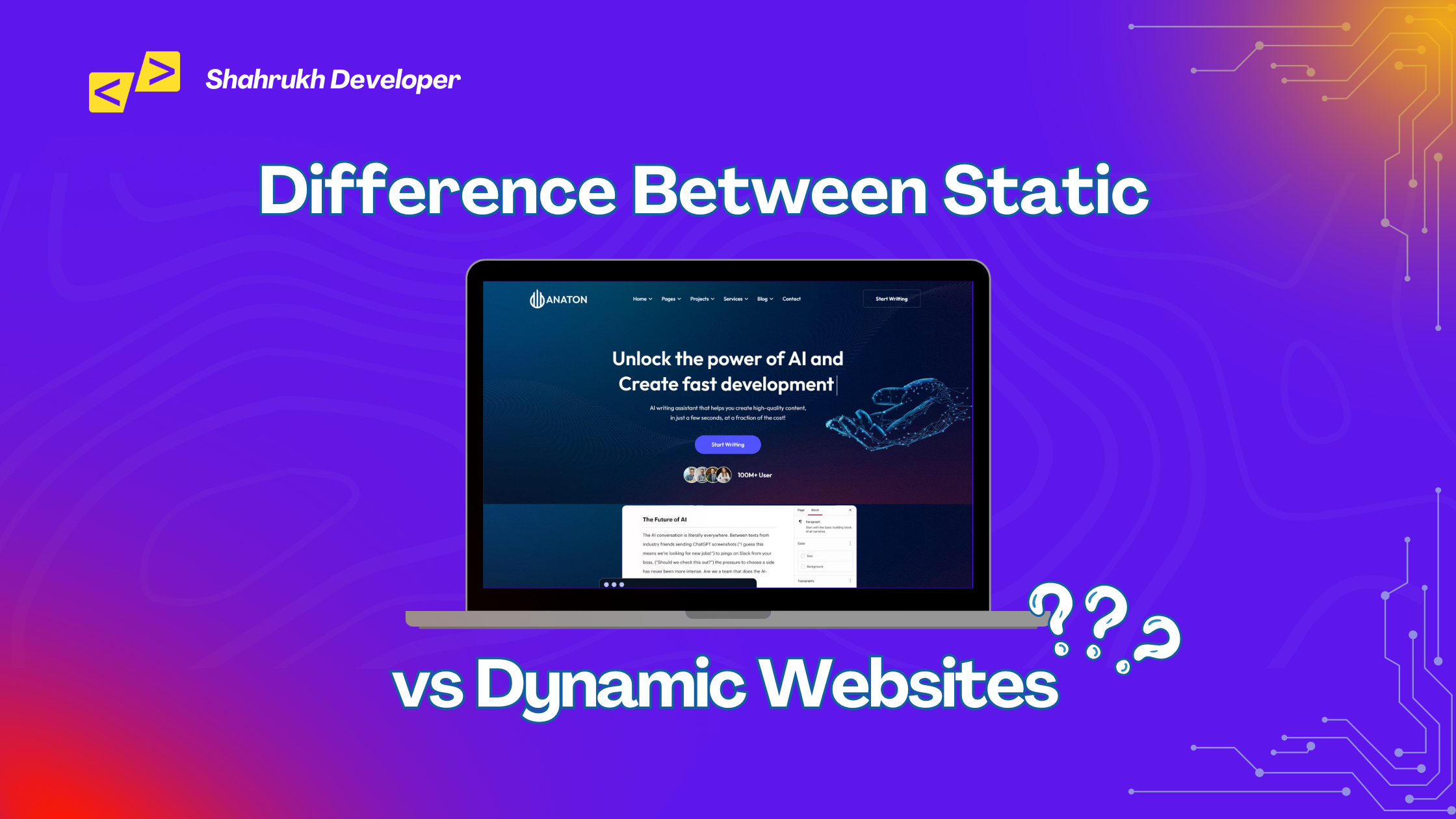The Difference Between Static and Dynamic Websites
When it comes to building a website, one of the first decisions you'll face is whether to create a static or dynamic site. Both types of websites serve different purposes and come with their own sets of advantages and disadvantages. Understanding the differences between static and dynamic websites can help you make an informed decision that best suits your needs. Let's explore the key differences between static and dynamic websites.
1. What is a Static Website?
A static website is a type of website that delivers fixed content to users. The content on each page is hard-coded in HTML and CSS, and remains the same for every visitor. Static websites are typically simpler and faster to load, as there is no need for server-side processing to generate content dynamically.
Pros of Static Websites:
- Faster load times due to pre-rendered content.
- Lower cost and easier to set up for small-scale projects.
- Less server load and lower maintenance requirements.
- Content updates require manual changes to HTML files.
- Limited functionality and interactivity.
- Not ideal for websites that need frequent updates or personalized content.
2. What is a Dynamic Website?
A dynamic website generates content in real-time based on user interactions or other factors. Unlike static websites, dynamic websites use server-side scripting languages (such as PHP, Python, or Ruby) to create and display content dynamically. This allows for more complex features, user interactions, and personalized experiences.
Pros of Dynamic Websites:
- Content can be updated easily through a content management system (CMS).
- Supports advanced functionality, such as user accounts and interactive features.
- Allows for personalized experiences based on user data and interactions.
- Requires more server resources and may have slower load times.
- Higher development and maintenance costs compared to static sites.
- More complex to set up and manage, especially for beginners.
3. Key Differences Between Static and Dynamic Websites
Content Delivery: Static websites deliver fixed content, while dynamic websites generate content based on user input or other factors.
Interactivity: Static sites offer limited interactivity, whereas dynamic sites can provide a more interactive experience.
Maintenance: Static websites require manual updates, while dynamic websites can be updated through a CMS or automated processes.
Cost and Complexity: Static websites are generally less expensive and simpler to develop, whereas dynamic websites involve higher costs and complexity.
4. Choosing the Right Type for Your Website
The choice between a static and dynamic website depends on your specific needs and goals. If you need a simple, low-cost site with minimal updates, a static website may be the best option. However, if you require advanced functionality, frequent updates, or personalized content, a dynamic website is likely a better fit. Consider your budget, technical expertise, and long-term goals when making your decision.
Conclusion
Both static and dynamic websites have their own advantages and are suitable for different purposes. By understanding the differences between the two, you can make an informed choice that aligns with your business objectives and technical requirements. Whether you opt for a static or dynamic website, investing in a well-designed and functional site is crucial for achieving online success.
Need Help Deciding Between a Static or Dynamic Website?
Choosing the right type of website can be challenging. Contact us to discuss your needs and get expert advice on the best solution for your business.
